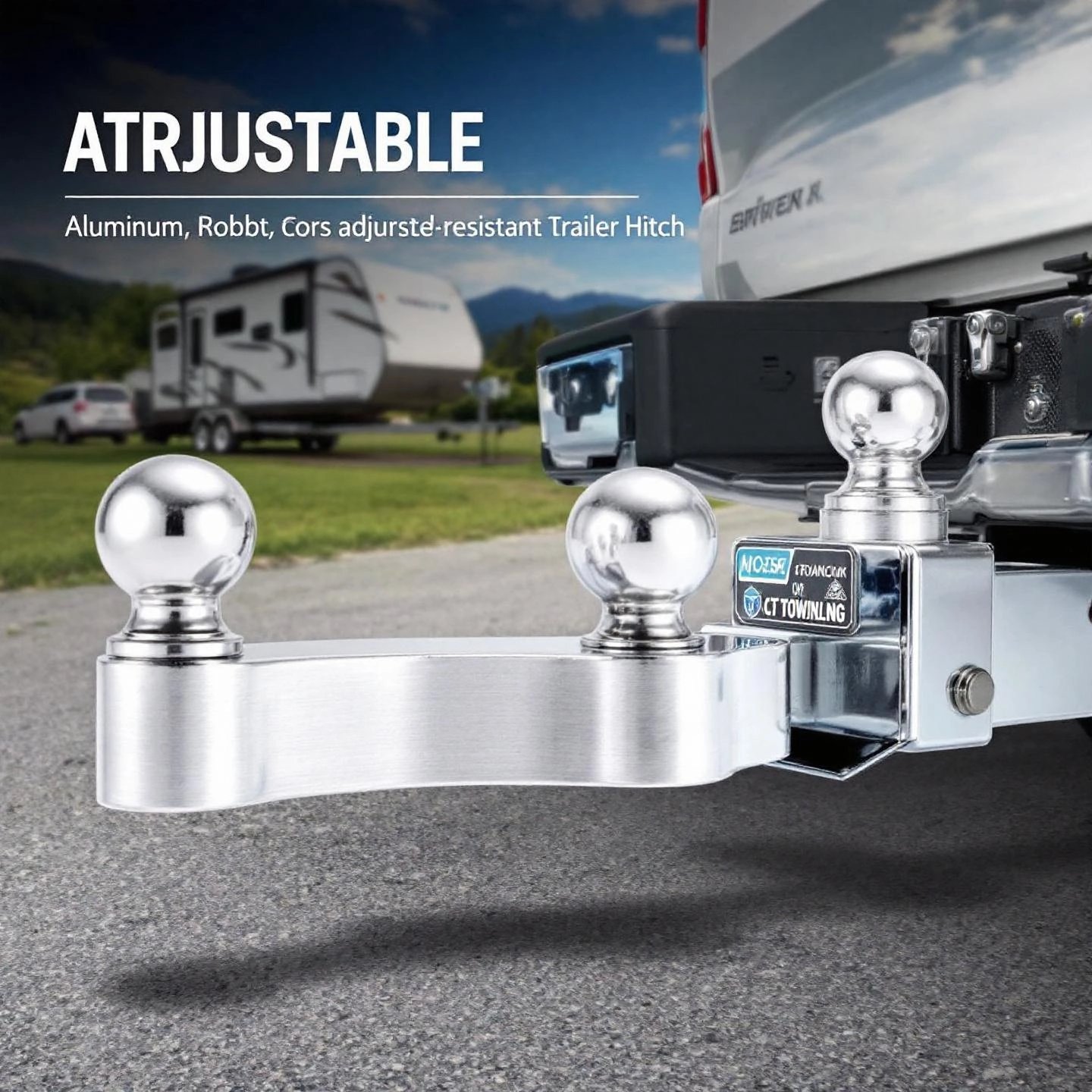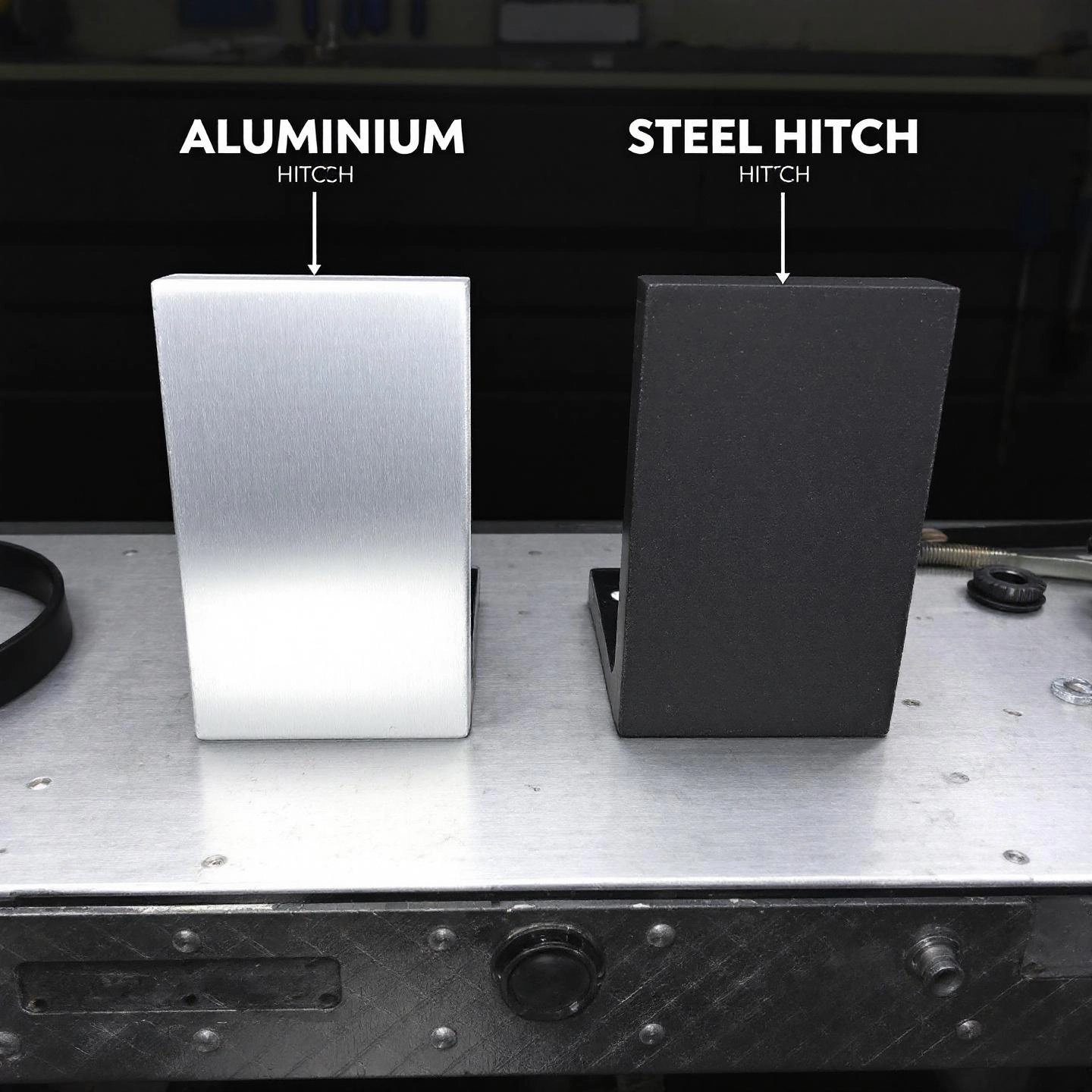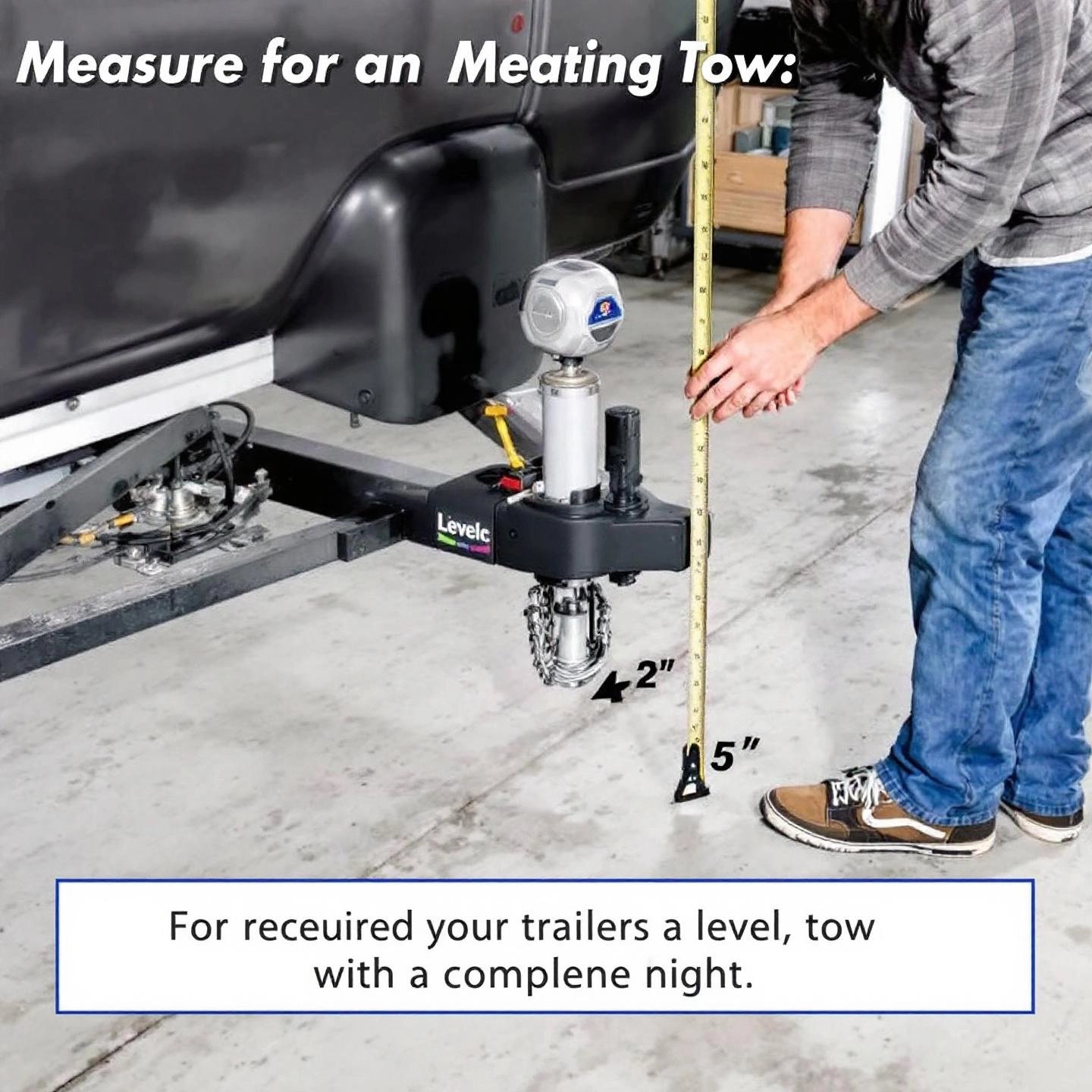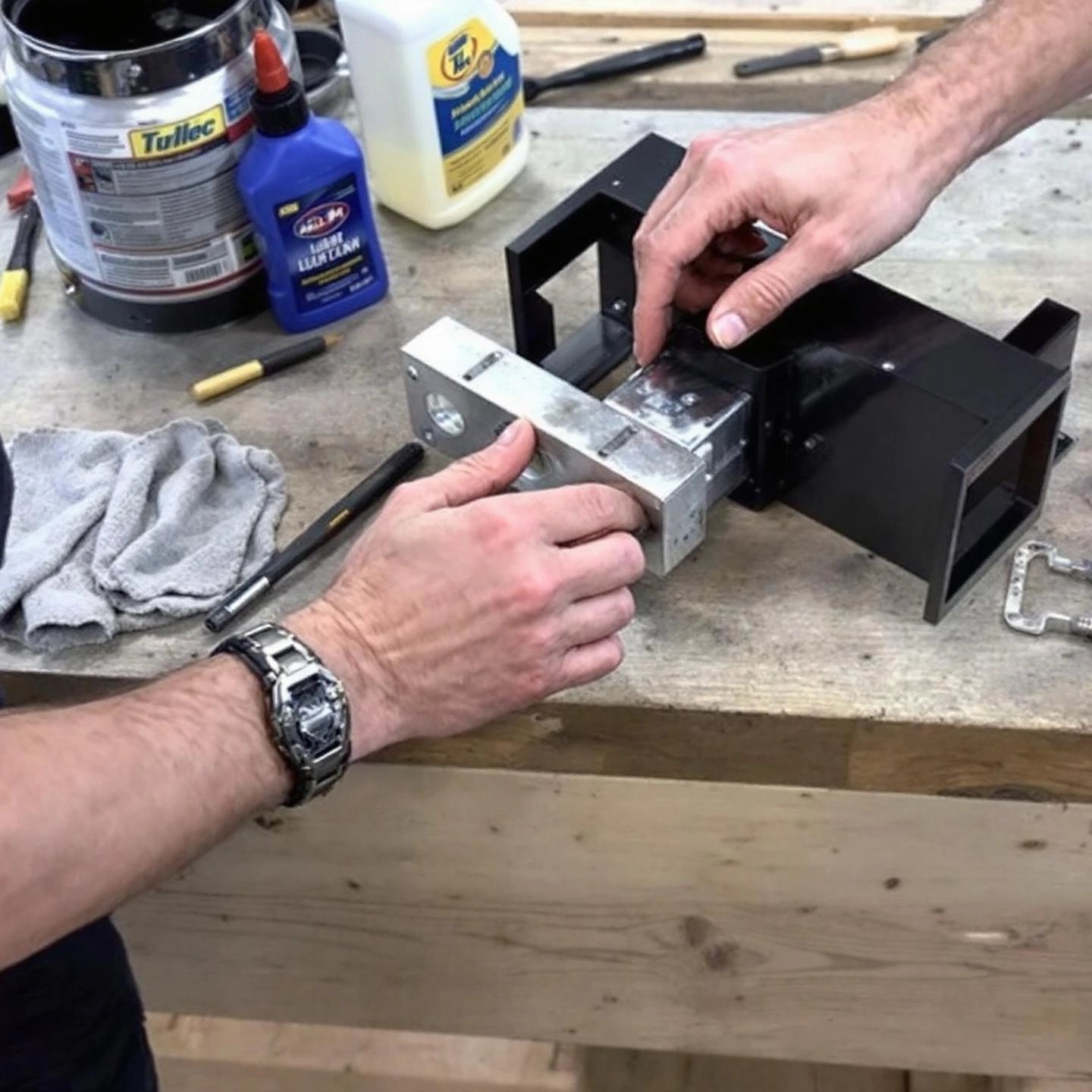
Ever tried to hitch up a trailer only to find your vehicle and trailer just don’t line up? Or maybe you’ve wondered if there’s a single solution for towing everything from a boat to a camper, without swapping out your equipment every time. That’s where the aluminum adjustable trailer hitch comes in—a game-changer for anyone serious about safe, efficient, and flexible towing.
At its core, an aluminum adjustable trailer hitch is designed to connect your vehicle to a variety of trailers, while allowing you to easily adjust the hitch height. This means you can achieve a perfectly level towing setup, regardless of whether you’re hauling a lightweight utility trailer or a heavy-duty camper. Why does this matter? A level connection isn’t just about looks—it directly impacts your safety, towing stability, and even fuel efficiency. When your trailer rides level, you’ll notice smoother handling, less sway, and reduced wear on both your vehicle and trailer components.
But that’s just the beginning. Here’s what makes a versatile trailer hitch like this so valuable:
Throughout this guide, you’ll discover how to maximize the utility and lifespan of your aluminum adjustable trailer hitch—whether you’re a first-time hauler or a seasoned pro. We’ll break down the unique advantages of aluminum, key features to look for, sizing tips, installation steps, and essential maintenance. Ready to unlock peak performance and towing confidence? Let’s dive in.

When you’re deciding between an aluminum vs steel trailer hitch, the choice can feel overwhelming. Do you go for the tried-and-true strength of steel, or opt for the modern advantages of aluminum? Let’s break down what really sets aluminum apart—and why so many towing enthusiasts are making the switch.
Imagine you’re lifting your hitch after a long day on the road. Would you rather wrestle with a heavy chunk of steel, or pick up a lightweight, corrosion resistant trailer hitch that’s just as capable? Here’s why aluminum is winning over more and more drivers:
| Feature | Aluminum Hitch | Steel Hitch |
|---|---|---|
| Weight | 17-23 lbs (varies by size) | 31-38 lbs (varies by size) |
| Corrosion Resistance | Excellent (naturally rust-proof) | Moderate (requires coatings to prevent rust) |
| Strength-to-Weight Ratio | High (can tow up to 21,000 lbs with larger shafts) | Very High (can tow up to 22,000 lbs with larger shafts) |
| Maintenance | Simple cleaning; no need for grease or repainting | Requires periodic inspection, grease, and touch-up paint |
| Best Use Scenario | Frequent towing, all-weather use, easy handling | Extreme heavy-duty towing, budget-conscious buyers |
For most drivers, the balance of light weight, corrosion resistance, and solid towing capacity makes aluminum an ideal material for adjustable hitches. It’s especially valuable if you’re towing in challenging weather or need to swap your hitch frequently. While steel may edge out aluminum for the heaviest loads, the convenience and longevity of aluminum are hard to beat for everyday and even demanding towing needs.
Now that you know why aluminum is often the smart choice, let’s look at the specific features that set a high-quality adjustable hitch apart—so you can choose the best fit for your unique towing setup.
Ever wondered what separates a basic hitch from a truly versatile, high-quality aluminum adjustable trailer hitch? If you’re towing different trailers, switching loads, or just want peace of mind every time you hit the road, understanding the essential features is crucial. Let’s break down the adjustable drop hitch features and see why these details matter for both safety and convenience.
When evaluating or shopping for a hitch, keep these key elements in mind:
Imagine you’re switching from hauling a low-riding utility trailer in the morning to a high-clearance boat trailer in the afternoon. With a dual ball adjustable hitch, you simply flip the ball and adjust the drop or rise—no extra tools or hitches required. The right towing capacity and secure locking pins mean you can make the change quickly and confidently, knowing your setup is safe and stable for every trip (Lippert).
| Feature | Why It Matters |
|---|---|
| Adjustable Drop/Rise Range | Levels trailer for safe, stable towing with any trailer height |
| Dual Ball Sizes | Accommodates multiple trailer coupler sizes with a single hitch |
| Towing Capacity | Ensures safe operation within your vehicle’s limits |
| Locking Mechanisms | Secures hitch components, prevents theft, and reduces rattle |
| Material Quality | Lightweight, corrosion-resistant, and durable for long-term use |
| Compatibility | Fits standard receiver sizes and a variety of trailer types |
Armed with this knowledge, you’ll be ready to select a hitch that truly matches your towing needs. Next, we’ll walk you through how to measure and choose the right size and model for your specific setup—ensuring every trip starts with confidence.

When it comes to towing, one size definitely does not fit all. Ever wondered why some setups glide smoothly down the highway while others feel unsteady or awkward? It all starts with choosing the right adjustable trailer hitch for your vehicle and trailer combination. Sounds complex? Let’s break it down step by step so you can confidently select the best aluminum adjustable trailer hitch for your needs—no guesswork required.
Picture this: your truck sits higher than your trailer, or vice versa. If you simply connect the two without compensation, you risk instability, uneven tire wear, and even unsafe handling. The solution? Find the correct rise or drop your hitch needs to keep the trailer level. Here’s how:
| Measurement | What to Do |
|---|---|
| Hitch Height (A) | With your vehicle on level ground, measure from the ground to the top of your hitch receiver opening. |
| Coupler Height (B) | With your trailer level, measure from the ground to the bottom of the trailer’s coupler. |
| Rise/Drop Needed (C) |
Subtract the coupler height from the hitch height. If hitch height is greater, you need a drop. If coupler height is greater, you need a rise. Formula: Hitch Height (A) – Coupler Height (B) = Rise/Drop (C) |
For example, if your hitch height is 16" and your coupler height is 11", you’ll need a 5" drop. If your hitch is 12" and coupler is 14", you’ll need a 2" rise.
Not all adjustable hitches are created equal—especially when it comes to weight. To ensure safe towing, always:
For example, if your trailer’s loaded GTW is 9,000 lbs and tongue weight is 900 lbs, select a hitch with ratings meeting or exceeding these figures.
Do you tow multiple trailers? If so, you’ll want a hitch that offers:
While steel hitches have their place, aluminum models offer unmatched corrosion resistance, lighter weight, and long-term durability—especially in wet or coastal environments. For a reliable, all-weather solution, prioritize aircraft-grade aluminum and CNC-machined components for precision and strength.
When you’re ready to make a choice, start with reputable manufacturers known for quality and safety. For those seeking a dependable, high-performance option, Shengxin’s Aluminum Adjustable Trailer Hitch stands out for its robust build, versatile adjustment system, and dual-ball design—making it an excellent fit for both professional and recreational towing needs.
"A properly sized and selected aluminum adjustable trailer hitch isn’t just a convenience—it’s your ticket to safer, smoother, and more versatile towing every time you hit the road."
With your hitch correctly matched, you’re now ready to move on to installation—ensuring a secure connection and peace of mind before every journey.
Ready to install your aluminum adjustable trailer hitch but not sure where to start? Whether you’re a first-timer or a seasoned DIYer, following the right steps makes all the difference. Imagine pulling out of your driveway with full confidence, knowing your hitch is secure and ready for the road ahead. Let’s walk through a foolproof process to install an aluminum adjustable hitch safely and efficiently.
Park your vehicle on a level surface, engage the parking brake, and chock the wheels. If your hitch installation area is tight, consider jacking up the rear for easier access.
| Step | Action |
|---|---|
| 1 | Read the Instructions: Always start by reviewing the manufacturer’s guide for your specific hitch. This ensures you’re familiar with unique features or requirements. |
| 2 | Prepare the Vehicle: Remove any obstructions such as the spare tire or lower the exhaust if needed for access. Clean the receiver tube and mounting points to ensure a snug fit. |
| 3 | Install the Drop/Rise Section: Slide the aluminum drop section into your hitch receiver. Secure it with the provided locking hitch pin. This can be oriented as either a drop or a rise, depending on your setup. |
| 4 | Attach the Adjustable Section and Hitch Ball(s): Align the hitch ball hole with the bracket, insert the securing pin, and lock in place. For dual ball setups, you can install one or both balls as needed. |
| 5 | Adjust to Desired Height: Slide the adjustable section to the correct height to match your trailer’s coupler. Secure with both the locking hitch pin and standard hitch pin—always use both for safety. |
| 6 | Tighten All Fasteners: Use a torque wrench to tighten bolts and nuts to the manufacturer’s specified values. This step is crucial for long-term safety and reliability. |
| 7 | Install the Ball Mount and Pin: Slide the ball mount into the receiver, insert the hitch pin or lock, and secure it firmly. |
| 8 | Double-Check Your Work: Inspect all connections, pins, and fasteners. Ensure the hitch is firmly attached, and nothing is loose or misaligned. |
| 9 | Test Fit the Trailer: Connect your trailer to the hitch, checking for proper alignment, height, and secure coupling. Test trailer lights and brakes if applicable. |
Once your hitch is securely installed, you’re ready for the next step: keeping it in peak condition with regular maintenance. Let’s explore how simple routines can ensure your hitch lasts for years and every tow is as safe as the first.

When you invest in a high-quality aluminum adjustable trailer hitch, you expect it to deliver reliable performance for years. But even the most durable equipment needs a little attention to stay in top shape. Wondering how to care for your trailer hitch without turning it into a chore? Let’s break down the essentials—so your hitch is always ready for the next adventure, rain or shine.
Imagine pulling up to the lake or campsite, only to find your hitch stuck, corroded, or making unsettling noises. It’s a hassle you can easily avoid. Routine aluminum hitch maintenance not only extends the life of your equipment but also keeps your towing experience safe and stress-free.
| Task | How Often | What to Do |
|---|---|---|
| Visual Inspection | Before each tow; full check at least once a year | Remove the hitch from your vehicle. Inspect for cracks, exposed metal, rust, or any signs of wear on all components—especially the ball, drop bar, and pins. Replace damaged parts promptly. |
| Cleaning | Monthly or after exposure to dirt, road salt, or water | Use a soft brush or cloth to remove grime from the hitch, ball mount, and pins. Pay extra attention to moving parts and the drop bar, where debris can cause friction or corrosion. |
| Lubrication | Every few months or as needed | Apply a high-quality, dry lubricant to moving parts and locking mechanisms. For the hitch ball, use grease to reduce towing friction. Avoid over-lubricating, as excess can attract dirt. |
| Rust Prevention | As part of cleaning/lubrication routine | Although aluminum resists rust, exposed metal (like pins or hardware) may still corrode. Use a rust inhibitor or penetrating lubricant on these areas, and wipe away excess. Consider a hitch cover for added protection. |
| Storage | Whenever not in use for extended periods | Store your hitch in a dry, secure place—away from harsh weather, humidity, or salt. This is especially important for those living in coastal or winter climates. |
High-quality hitches, such as those from Shengxin Aluminum, are engineered for longevity and corrosion resistance. Their aircraft-grade aluminum construction means less worry about rust and more time enjoying the open road. Still, a few minutes of regular care is the secret to ensuring your hitch always looks and performs its best.
"A well-maintained aluminum adjustable trailer hitch isn’t just about longevity—it’s about confidence. When you know your equipment is in peak condition, every tow is safer, smoother, and more enjoyable."
With your maintenance routine in place, you’re ready to tackle any towing challenge. But what if you run into unexpected issues on the road? Next, we’ll cover troubleshooting tips to keep you rolling without a hitch.
Ever had your trailer start swaying on the highway or struggled with a hitch that just won’t line up? These moments can turn an easy trip into a stressful ordeal. The good news? Most common issues with adjustable trailer hitches have straightforward solutions. Let’s dive into practical trailer hitch troubleshooting—so you can get back on the road safely and confidently.
Imagine cruising down the interstate when a gust of wind or a passing truck sends your trailer swaying side to side. Sounds unnerving? You’re not alone—trailer sway is one of the most frequent and hazardous towing problems. Here’s why it happens and how to fix it:
Quick Fix: If sway starts, don’t panic or oversteer. Gradually reduce speed and, if equipped, manually activate the trailer brakes to bring everything back under control.
Does your hitch rattle or feel loose? This can lead to dangerous detachment or excessive movement:
Having trouble sliding or adjusting the drop/rise section?
Non-functioning trailer lights or brakes are more than an inconvenience—they’re a safety hazard:
Even though aluminum resists rust, steel pins or hardware can corrode:
If your hitch and trailer aren’t lining up or the connection feels off, you may be dealing with installation issues:
Some problems—like persistent sway despite balanced loads, severe rust, or recurring electrical failures—warrant expert attention. Don’t hesitate to consult a professional if you’re unsure about your hitch’s safety or performance.
By addressing these common issues proactively, you’ll enjoy safer, smoother towing. Next, let’s recap the core advantages of aluminum adjustable trailer hitches and how you can make the most of your investment for years to come.
When it comes to safe and efficient towing, the right equipment makes all the difference. So, what sets the best aluminum adjustable trailer hitch apart from the rest? Let’s recap the core advantages you gain from choosing this smart solution for your towing needs.
Imagine the peace of mind you’ll have knowing your towing setup is safe, adaptable, and built to last. With the insights you’ve gained—from sizing and installation to troubleshooting and maintenance—you’re equipped to make every trip smoother and safer.
If you’re ready to take the next step, consider exploring Shengxin’s Aluminum Adjustable Trailer Hitch. Its precision-engineered, corrosion-resistant design offers the versatility and durability serious haulers demand. Whether you’re a weekend adventurer or a professional on the move, choosing a high-quality, reliable trailer hitch is one of the smartest investments you can make for your vehicle and your cargo.
So, put your new knowledge into action. With the right aluminum adjustable trailer hitch, every journey starts with confidence and ends with success.
Aluminum hitches are highly valued for their combination of lightweight construction, corrosion resistance, and impressive strength. They’re ideal for frequent or all-weather towing, offering durability without the risk of rust, especially in coastal or winter climates.
Absolutely. An adjustable trailer hitch allows you to tow multiple trailers of varying heights and weights with one system. The flexibility to level your trailer and switch ball sizes means safer, more stable towing and eliminates the need for multiple hitches.
Aluminum is often preferred for trailer hitches due to its lightweight nature, natural resistance to corrosion, and strong towing capacity. This makes it especially suitable for those who want easy handling and long-term reliability without worrying about rust.
Yes, many aluminum adjustable trailer hitches are designed to be inverted in the receiver, allowing you to achieve either a rise or drop. This helps you match your trailer’s height for a level, safe towing setup.
Start by measuring your vehicle’s hitch height and your trailer’s coupler height to determine the necessary rise or drop. Next, check the gross trailer weight and tongue weight ratings of your heaviest trailer, ensuring your hitch meets or exceeds these specs. Opt for a dual-ball, CNC-machined aluminum hitch with robust locking mechanisms for maximum versatility and safety—like Shengxin’s Aluminum Adjustable Trailer Hitch.
 Інтернет-сервіс
Інтернет-сервіс 0086 136 3563 2360
0086 136 3563 2360 sales@sxalu.com
sales@sxalu.com +86 136 3563 2360
+86 136 3563 2360